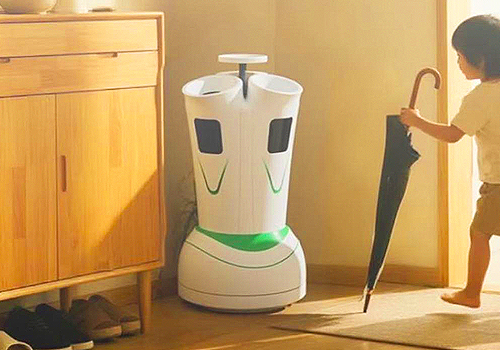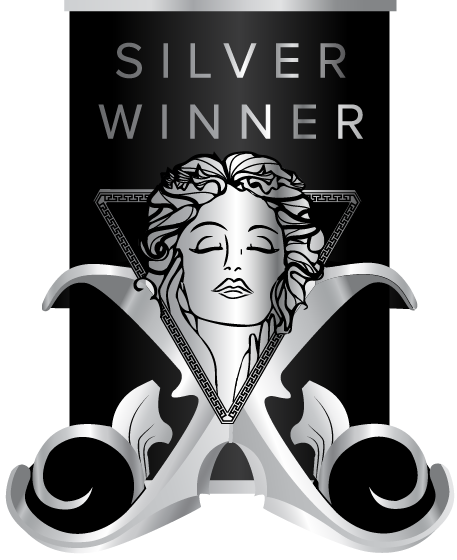
Interview
Xinyu Zhang
1 Congratulations on winning the MUSE Design Awards! Can you introduce yourself and share about what inspired you to pursue design as a career?
Hello! I’m a student specializing in product design, and I’m truly honored to receive recognition from the MUSE Design Awards. What inspires me to pursue a career in design is my passion for using design to solve practical problems—from optimizing the user experience of daily necessities for my family to creating small products that better meet the needs of my peers. I’ve always believed that design is not just about aesthetics; it’s about using ingenuity to make life more convenient and meaningful. This belief in bringing design to life and letting it shine will continue to drive me forward in my studies.
2 What does being recognized in the MUSE Design Awards mean to you?
For a product design student like me, this recognition from the MUSE Design Awards is more than an honor—it’s a powerful vote of confidence. It affirms that my belief in using design to solve practical problems is on the right track and encourages me to keep refining my skills as I learn. More importantly, it fuels my passion to continue creating thoughtful, user-centered designs, inspiring me to turn more ideas into tangible and meaningful works in the future.
3 How has this achievement impacted your career, team, or agency, and what opportunities has it brought so far?
For me, this recognition at the start of my career means a lot—it has given me more confidence to apply for internships and has opened doors to interviews with design studios. As a student, it has also allowed me to receive more focused guidance from mentors, take part in higher-quality design exchanges, and gain valuable industry insights.
4 What role does experimentation play in your creative process? Can you share an example?
Experimentation was central to developing this smart umbrella dryer—it helped transform the idea of solving the “wet umbrella problem” from concept to reality. Testing not only verified technical feasibility but also ensured the design truly met user needs. The experiment that left the deepest impression on me was balancing drying efficiency with umbrella surface protection. Initially, I planned to use high temperatures for rapid drying, but tests showed that anything above 45°C deformed cotton fabrics and aged plastic ribs. I repeatedly adjusted the parameters, testing temperature ranges (35°C–45°C), wind speeds (low/medium/high), and umbrella materials (fabric, plastic, fiber). Through these experiments, I arrived at the optimal solution: precise temperature control below 45°C combined with 360° circular airflow. This approach concentrated airflow on areas with residual moisture, used temperature sensors to prevent damage, and, through energy recovery circuit testing, kept power consumption to just 10 watts—achieving both efficiency and sustainability. User interaction testing was equally important. I invited participants of different ages to evaluate the operation process and found that complex mode switching discouraged both older adults and children. After several rounds of simplification, I finalized a “one-button start + automatic umbrella type recognition” system that removed redundant steps and made the product intuitive for all users. These repeated tests and refinements ensured the final design was not only practical but also inclusive and user-friendly.
5 What's the most unusual source of inspiration you've ever drawn from for a project?
In this smart umbrella dryer project, the most unexpected inspiration came from observing the small discomforts often overlooked on rainy days—like people unconsciously wiping off dripping water after folding their umbrellas, the puddles left behind that make others instinctively avoid them, or elders repeatedly drying their umbrellas out of fear the fabric might mold. These subtle inconveniences became the starting point of the design. Rather than beginning with complex technology or abstract concepts, the project focused on these hidden pain points. For instance, to solve the issue of wet umbrellas leaving floors dirty and causing unpleasant odors, the design incorporates water collection along with UV sterilization and odor purification. To meet the needs of users of all ages, a one-button start and automatic umbrella type recognition system were developed, making it easy for both children and elders to use. By drawing inspiration from these tiny discomforts, the design breaks away from the notion that innovation must stem from grand ideas. Instead, it stays grounded in real, everyday experiences—fulfilling the goal of using design to solve small but meaningful problems.
6 What’s one thing you wish more people understood about the design process?
I hope more people understand that design is not a linear process of going directly from idea to product, but rather one that begins with real user pain points and evolves through detailed refinement and repeated validation. Take this smart umbrella dryer as an example: its core design didn’t start with complex technology, but with everyday issues users often overlook—like wet umbrellas dripping, causing dirt and odors. Every subsequent detail—such as 360° circular airflow to eliminate drying dead spots, one-button start with automatic umbrella type recognition for simplified use, UV sterilization and deodorization, and the use of recyclable materials with low energy consumption—was refined to address real needs and adapt to different users. From maintaining a temperature below 45°C to protect umbrella materials, to incorporating an energy recovery circuit that reduces power use by 30%, every design decision was validated against user scenarios and technical feasibility rather than simply chasing novelty. The true value of design lies in this process of observing small details to address larger needs, not just in the final product’s form or function.
7 How do you navigate the balance between meeting client expectations and staying true to your ideas?
I hope more people understand that design is not a linear process of going directly from idea to product, but rather one that begins with real user pain points and evolves through detailed refinement and repeated validation. Take this smart umbrella dryer as an example: its core design does not start with complex technology, but with the small, often overlooked issues users face every day—such as wet umbrellas dripping, causing dirt and odors. Every subsequent detail—like the 360° circular airflow that ensures even drying, the one-button start with automatic umbrella type recognition for simplified operation, the UV sterilization and deodorization system, and the use of 100% recyclable materials with a low energy design—was developed through continuous adjustment to solve real problems and address diverse needs. From maintaining the temperature below 45°C to protect umbrella materials, to incorporating energy recovery circuits that reduce power consumption by 30%, every design decision was tested against user scenarios and technical feasibility rather than simply chasing novelty. The true value of design lies in this process of seeing the big through the small—constantly refining and responding to real needs—rather than just in the final product’s appearance or function.
8 What were the challenges you faced while working on your award-winning design, and how did you overcome them?
We faced two main challenges: first, balancing drying efficiency with umbrella protection. Through repeated testing, we established precise temperature control below 45°C combined with 360° circular airflow, achieving one-minute rapid drying while preventing damage to the umbrella surface. The second challenge was simplifying operation to suit all users. When complex modes were initially proposed by the client, user testing revealed that a one-button start with automatic umbrella type recognition worked far better for real rainy-day scenarios—ultimately leading to a shared consensus.
9 How do you recharge your creativity when you hit a creative block?
When I encounter a creative block, I recharge in two ways. First, I return to real user scenarios to observe. On rainy days, I might visit shopping malls or residential entrances to watch how people open and close their umbrellas, noticing small details like how they wipe off dripping water or avoid wet patches. These real behaviors help me break out of fixed thinking and refocus on the core goal of solving practical problems—just as I did when identifying pain points such as wet, dirty umbrellas that generate odors. Second, I analyze the functional logic of similar products rather than focusing on their appearance. For example, I study the airflow and temperature control systems of different drying devices, then innovate based on project needs—such as developing a 360° circular airflow from the unidirectional flow of a standard dryer. This approach not only eliminates drying dead spots but also ensures umbrella protection without damage, allowing creativity to emerge through observation and adaptation.
10 What personal values or experiences do you infuse into your designs?
In designing this smart umbrella dryer, I incorporated my personal value of solving everyday pain points through small actions—an idea inspired by observing elders repeatedly air-drying moldy umbrellas and my own frustration with dripping umbrellas on rainy days. The core of the design, therefore, focuses on alleviating minor inconveniences. To address the mess and odor caused by wet umbrellas, I added drip collection, UV sterilization, and deodorization functions, making the product not just a dryer, but one that truly responds to real-life needs. At the same time, inclusivity and sustainability were key considerations. To lower the usage threshold for both older adults and children, the interaction was simplified to a one-button start with automatic umbrella type recognition, eliminating complex operations. The design also uses 100% recyclable materials and operates in a low-energy mode—consuming only 10 watts—to reduce its carbon footprint. Together, these choices ensure the product is easy to use for people of all ages while reflecting the idea that design should care for both people and the environment.
11 What is an advice that you would you give to aspiring designers aiming for success?
- Observe daily life closely and find design inspiration in subtle pain points. - Emphasize testing and validation to ensure ideas truly meet real needs. - Stay true to the original intention of design, balancing practicality with warmth.
12 If you could collaborate with any designer, past or present, who would it be and why?
I would choose Naoto Fukasawa. His concept of “unconscious design” closely aligns with my own approach of starting from everyday pain points and allowing design to naturally integrate into life. He has a remarkable ability to observe small, habitual behaviors and transform them into products that subtly meet people’s needs. This is the same philosophy I apply in designing the intelligent umbrella dryer—not by creating complex features, but through thoughtful details like one-click activation, automatic umbrella type recognition, and water drip collection to quietly ease small inconveniences on rainy days. If I had the opportunity to collaborate with him, I would love to learn how to uncover latent needs more precisely, enabling products to not only solve practical problems but also offer a calm and natural user experience—making design an “invisible helper” in daily life.
13 What's one question you wish people would ask you about your work, and what's your answer?
It’s not just a practical tool for solving the problems of dripping and moldy umbrellas, but also a source of small joy—making rainy days more comfortable. For example, there’s no need to rush to wipe the floor when you get home, no more musty smell from damp umbrellas, easier operation for the elderly and children, and cleaner public spaces without wet stains. The core of the design is to make the product an invisible helper on rainy days—relieving anxiety through thoughtful details and allowing people to feel cared for, even in gloomy weather. This, to me, is the essence of design with warmth.

